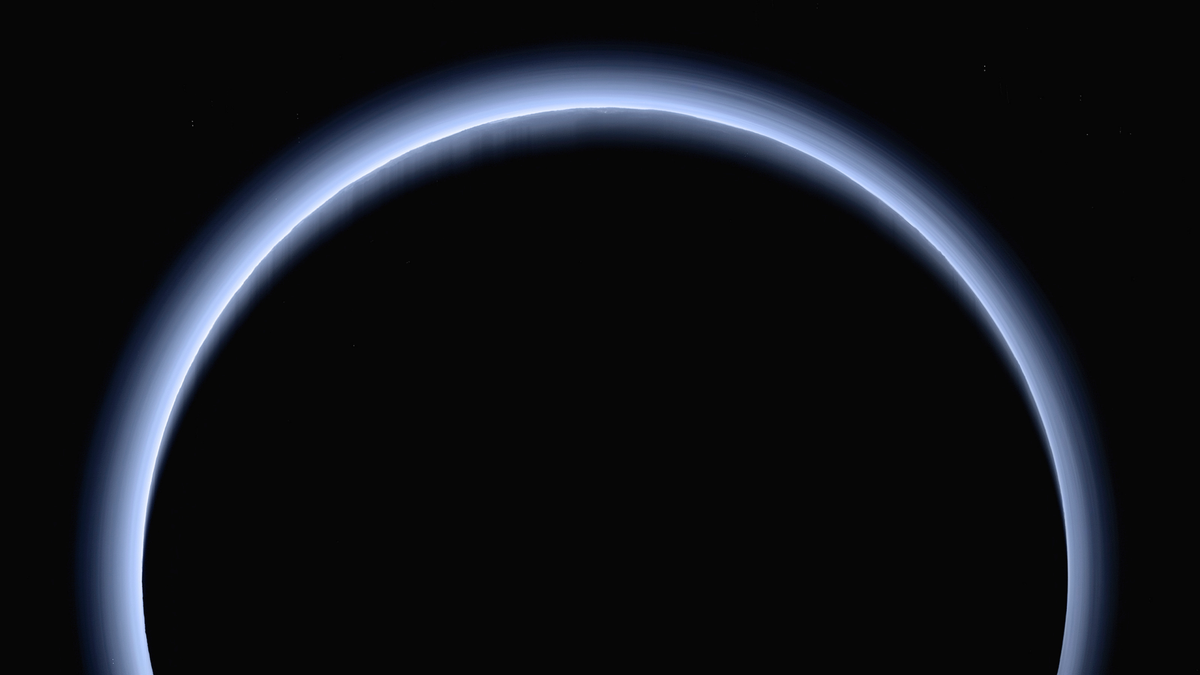
FILE - This image made available by NASA in March 2017 shows Pluto illuminated from behind by the sun as the New Horizons spacecraft travels away from it at a distance of about 120,000 miles (200,000 kilometers). Research Institute via AP)
An ocean on Pluto long thought to have frozen over could actually just be hidden from view by an insulating cloud of gas, scientists say.
The new research suggests there could be more oceans in the universe than previously thought and increases the possibility of extraterrestrial life.
In July 2015, NASA's New Horizons spacecraft flew through Pluto's system and provided the first ever close-up images of the distant dwarf planet and its moons.
After analyzing the images, scientists believed a subsurface ocean had to exist underneath an ice shell that thins at a basin roughly the size of Texas called Sputnik Planitia.
The team, from Japan's Hokkaido University, the Tokyo Institute of Technology, Tokushima University, Osaka University, Kobe University, and the University of California in Santa Cruz believed the ocean should have frozen over millions of years ago.
But the land formation shown in the images contradicted what was previously thought about the surface, as the inner surface of the ice shell that faces towards the ocean should have appeared flat.
In the new study published in the journal Nature Geoscience, researchers created computer simulations covering a timescale of 4.6 billion years, when the solar system began to form, to simulate two scenarios.
The simulations showed that without a gas hydrate insulating layer, the subsurface sea would have frozen over hundreds of millions of years ago as it would have taken just a million years for the ice crust to completely form over the ocean.
But the results suggested that with the insulating layer the ocean hardly freezes at all, and it slows down the process from one million to one billion years.
The team, therefore, believes there has to be an "insulating layer" of crystalline ice-like solids formed of gas and trapped within molecular water cages beneath the surface.
Because these gas hydrates are highly viscous and have low thermal conductivity they could create an insulating effect.
The team believes the insulating layer is likely made from methane that comes from Pluto's rocky core - as Pluto's atmosphere is methane-poor and nitrogen-rich.
Similar gas hydrate insulating layers could be maintaining other subsurface oceans in other icy moons and distant celestial objects, the team say.
Lead author Associate Professor Shunichi Kamata at Hokkaido University, said: "This could mean there are more oceans in the universe than previously thought, making the existence of extraterrestrial life more plausible."
